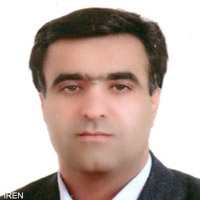Investigating the effects of best management practices on the reduction of point and non-point source pollution of water using SWAT model (Case Study: Seimareh River)
Author(s):
Article Type:
Research/Original Article (دارای رتبه معتبر)
Abstract:
Surface water quality have a far-reaching impact on the human health and aquatic ecosystems. The sources of surface water pollutions are including point source (PSP) and non-point source pollution (NPSP). Identify of point source and non-point source pollutions have been critical to evaluated surface water quality and major pollutant sources in a watershed. In this study, Soil and Water Assessment Tool (SWAT 2009) was used to investigate the influence of PS and NPS Pollution on the water quality. The model was calibrated for the period 2000-2009 and then validated for 2010-2011. The values of Nash-Sutcliffe efficiency (ENS) and R2 for simulations of flow and nutrient loads range from 0.84 to 0.96 for calibration period while varies from 0.69 to 0.85 for validation period used for flow simulation. The statistical results revealed that the SWAT model performed satisfactorily in simulating monthly flow and nutrient loads in Seimareh watershed. Also, SWAT was used to identify the critical source areas (CSAs) of sediment, TN and TP at the watershed level. SWAT identified 9 sub-watershed (33% of total watershed area) as CSAs for TN and TP. The sub-watersheds 1, 6, 10, 17, 21,22, 25, 26 and 29 were identified as CSAs of TN and TP while most of these sub-watershed were also identified as sediment CSAs. Then model was also used to simulate the impact of best management practices (BMPs) at controlling nutrient losses. Major BMPs implemented were reducing chemical fertilizer application, and building a filter strip along the river bank. The result of WQI demonstrates that water quality at upstream is generally better than downstream with higher level of nutrient loads. Also, the seasonal variations of the WQI clearly indicate the summer and autumn season as critical time period for nutrient loads within the watershed.
Keywords:
Language:
Persian
Published:
Iranian Journal of Soil and Water Research, Volume:48 Issue: 5, 2018
Pages:
995 to 1006
https://www.magiran.com/p655190
سامانه نویسندگان
مقالات دیگری از این نویسنده (گان)
-
Monitoring Ground Subsidence Based on Differential Synthetic Aperture Radar Interferometry and Changes in Groundwater Level (Case Study: Kermanshah Aquifer)
Mohsen Kazemi, Hassan Khosravi, *, Shahram Khalighi Sigaroodi, Shirin Mohammadkhan
Iranian Journal of Watershed Management Science and Engineering, -
Analysis of Actor Positions and Institutional Conflicts in Water Governance in Khuzestan
Sedigheh Ghafari, Mehdi Ghorbani*, , Ahmad Naderi, Mansur Ghanian, Hossein Azadi
Iranian Journal of Rainwater Catchment Systems,



